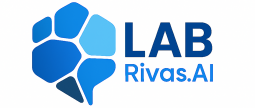We examined the new IEEE standard for algorithmic bias in autonomous intelligent systems, highlighting its strengths, gaps, and practical implications for developers, researchers, and regulators.
TL;DR
- IEEE Std 7003‑2024 provides a structured, documentation‑first framework for bias mitigation in autonomous AI.
- Its bias‑profile, stakeholder‑mapping, and risk‑assessment clauses improve transparency and auditability.
- Key gaps include missing quantitative metrics, limited sector‑specific guidance, and a need for conflict‑resolution mechanisms.
Why it matters
Algorithmic bias can undermine trust, exacerbate inequalities, and expose developers to legal risk. As autonomous intelligent systems (AIS) are deployed in high‑stakes domains such as healthcare, finance, and public safety, regulators and the public demand clear evidence that these systems are fair and accountable. A standardized approach gives organizations a common language for documenting bias‑related decisions, helps auditors trace how those decisions were made, and offers regulators a concrete benchmark for compliance. Without such a framework, bias mitigation efforts remain fragmented and difficult to verify.
How it works (plain words)
Our evaluation followed the standard’s five core clauses and broke them down into everyday steps:
- Bias profiling (Clause 4): Developers create a living document called a “bias profile.” This record lists the data sources, known bias risks, and mitigation actions taken at each stage of the system’s life cycle.
- Stakeholder identification (Clause 6): Early in the project, teams map all parties who influence or are impacted by the AIS: engineers, users, regulators, and potentially marginalized groups. The map ensures that diverse perspectives shape design choices.
- Data representation assessment (Clause 7): Teams review whether the training data reflect the real‑world population the system will serve. The standard asks for a qualitative description of any gaps, though it does not prescribe numeric thresholds.
- Risk‑impact assessment (Clause 8): Developers estimate the likelihood and severity of bias‑related harms, then prioritize mitigation actions accordingly. The process mirrors traditional safety‑critical risk analyses, making it familiar to engineers.
- Continuous evaluation (Clause 9): After deployment, the bias profile is updated with new monitoring results, and the risk assessment is revisited whenever the system or its environment changes.
By weaving these steps into existing development workflows, the standard turns abstract ethical goals into concrete engineering artifacts.
What we found
Our systematic review of the standard, backed by case studies from content‑moderation tools and healthcare AI, highlighted three high‑impact outcomes:
- Improved traceability: The bias profile forces teams to record decisions that would otherwise remain tacit. Auditors can follow a clear chain of evidence from data selection to model output.
- Better stakeholder engagement: Early mapping of affected groups reduced the likelihood of overlooking vulnerable populations, which aligns with best practices in human‑centered design.
- Structured risk awareness: The risk‑assessment template helped teams quantify potential harms and prioritize resources, producing more defensible safety cases for regulators.
Across the examined examples, teams reported faster compliance reviews and clearer communication with oversight bodies. However, the lack of explicit quantitative metrics for data representativeness limited the ability to benchmark progress across projects.
Limits and next steps
All inputs agree on three principal limitations:
- Missing quantitative benchmarks: The standard describes what to assess but not how to measure it numerically. Without clear thresholds, organizations must invent their own metrics, leading to inconsistency.
- Sector‑specific guidance is absent: Domains such that finance, criminal justice, and medical diagnostics face unique bias vectors. Tailored annexes would make the standard more actionable for specialized teams.
- Limited conflict‑resolution guidance: When stakeholder priorities clash, e.g., a business’s efficiency goal versus a community’s fairness demand, the standard offers no procedural roadmap.
To address these gaps, we recommend:
- Developing companion documents that define quantitative metrics (e.g., demographic parity thresholds) for common data domains.
- Creating industry‑specific annexes that translate the generic clauses into concrete checklists for finance, healthcare, and public‑sector AI.
- Embedding a stakeholder‑conflict resolution process, perhaps borrowing from established ethics‑review frameworks, to help teams navigate competing interests.
Future work could also explore automated tooling that integrates bias‑profile updates into continuous integration pipelines, further lowering the operational burden.
FAQ
- What is a “bias profile” and why should we maintain one?
- A bias profile is a living document that records data sources, identified bias risks, and mitigation actions throughout the AI life cycle. It makes bias‑related decisions transparent and auditable.
- Do I need to collect new data to comply with IEEE Std 7003‑2024?
- No. The standard does not force new data collection, but it does require a clear assessment of how well existing data represent the intended user population.
- Can the standard be applied to small‑scale projects?
- Yes. While the standard was written with large, high‑impact systems in mind, the documentation‑first approach can be scaled down; a lightweight bias profile can still provide valuable traceability.
- How does the standard help with regulatory compliance?
- By providing a structured set of artifacts, bias profile, stakeholder map, and risk assessment, regulators have concrete evidence of bias mitigation efforts, simplifying audits and certifications.
Read the paper
Reference
Huang, W., & Rivas, P. (2025). The new regulatory paradigm: IEEE Std 7003 and its impact on bias management in autonomous intelligent systems. In Proceedings of AIR‑RES 2025: The 2025 International Conference on the AI Revolution: Research, Ethics, and Society (pp. 1–13). Las Vegas, NV, USA. Download PDF


